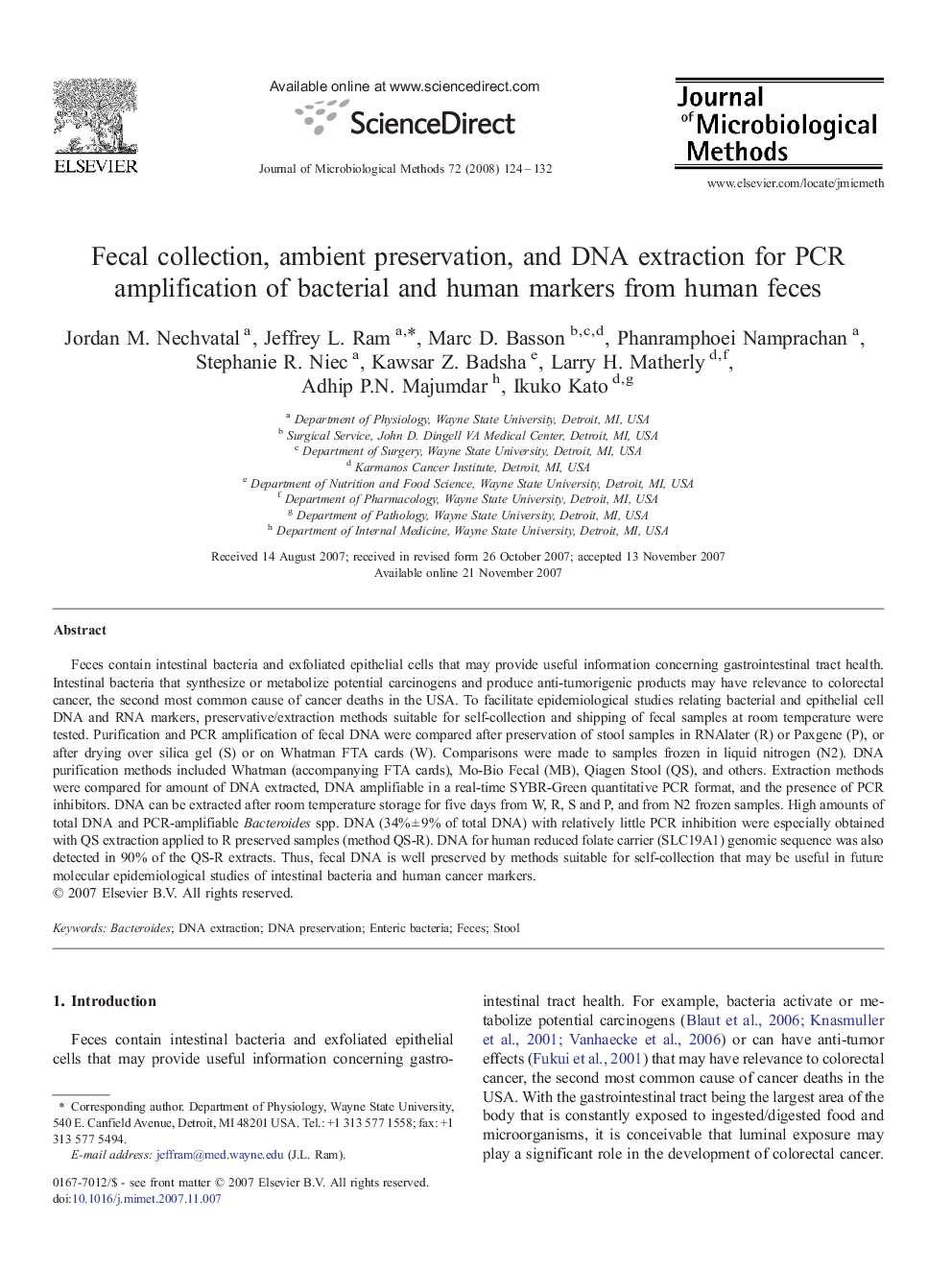| Article ID | Journal | Published Year | Pages | File Type |
|---|---|---|---|---|
| 2091016 | Journal of Microbiological Methods | 2008 | 9 Pages |
Feces contain intestinal bacteria and exfoliated epithelial cells that may provide useful information concerning gastrointestinal tract health. Intestinal bacteria that synthesize or metabolize potential carcinogens and produce anti-tumorigenic products may have relevance to colorectal cancer, the second most common cause of cancer deaths in the USA. To facilitate epidemiological studies relating bacterial and epithelial cell DNA and RNA markers, preservative/extraction methods suitable for self-collection and shipping of fecal samples at room temperature were tested. Purification and PCR amplification of fecal DNA were compared after preservation of stool samples in RNAlater (R) or Paxgene (P), or after drying over silica gel (S) or on Whatman FTA cards (W). Comparisons were made to samples frozen in liquid nitrogen (N2). DNA purification methods included Whatman (accompanying FTA cards), Mo-Bio Fecal (MB), Qiagen Stool (QS), and others. Extraction methods were compared for amount of DNA extracted, DNA amplifiable in a real-time SYBR-Green quantitative PCR format, and the presence of PCR inhibitors. DNA can be extracted after room temperature storage for five days from W, R, S and P, and from N2 frozen samples. High amounts of total DNA and PCR-amplifiable Bacteroides spp. DNA (34% ± 9% of total DNA) with relatively little PCR inhibition were especially obtained with QS extraction applied to R preserved samples (method QS-R). DNA for human reduced folate carrier (SLC19A1) genomic sequence was also detected in 90% of the QS-R extracts. Thus, fecal DNA is well preserved by methods suitable for self-collection that may be useful in future molecular epidemiological studies of intestinal bacteria and human cancer markers.
